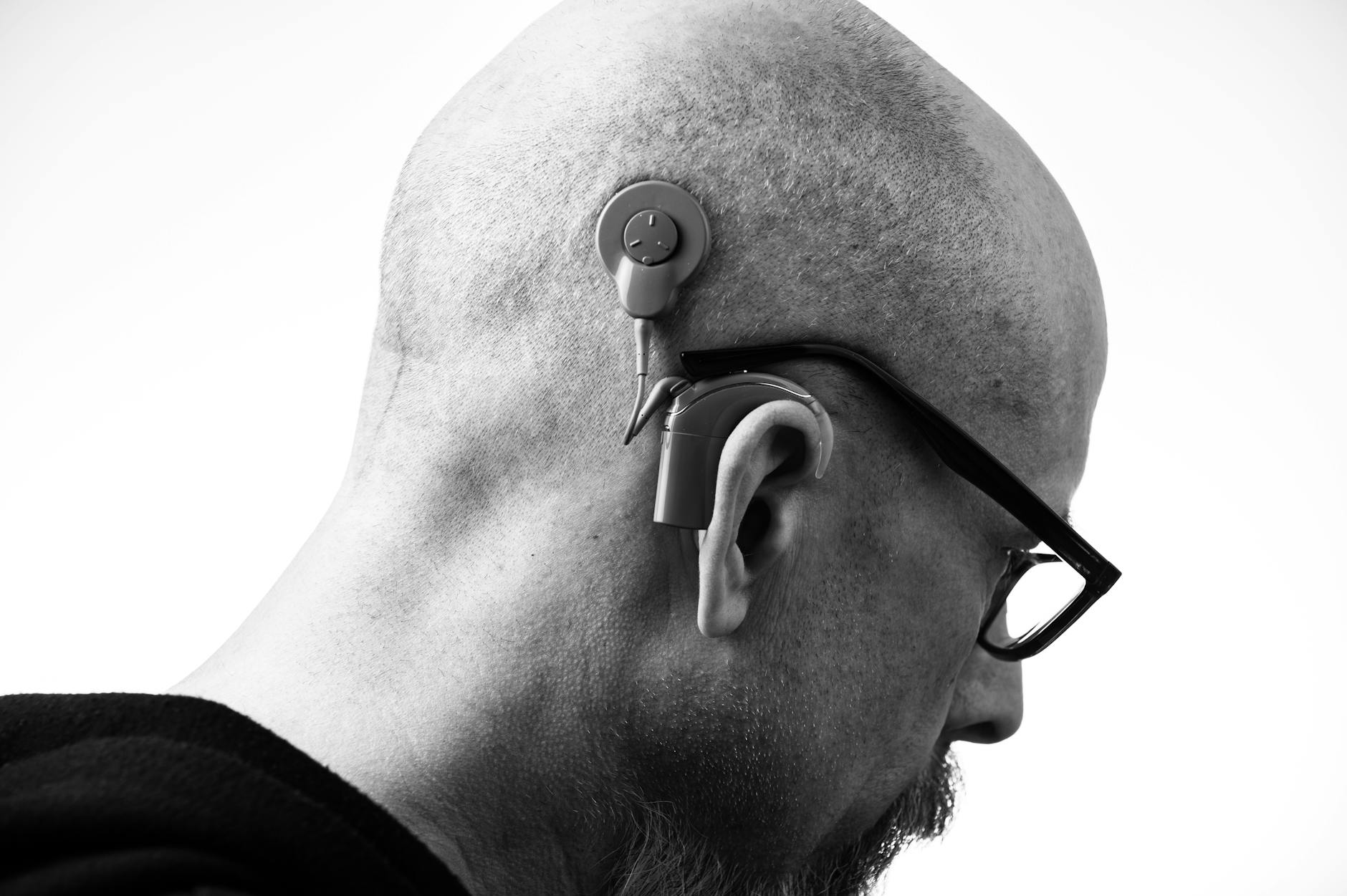Lede: You wake up and one ear sounds like it’s stuffed with cotton. No pain, just silence or a weird, hollow echo. If that’s you, time matters—fast. Some types of sudden hearing loss respond best to treatment in the first 48–72 hours. Here’s exactly what to watch for, what to say when you call for help, and how your care team can give you the best shot at recovery.
What Sudden Hearing Loss Feels Like
Sudden hearing loss isn’t just “a little clogged.” It’s a rapid drop in hearing in one ear (sometimes both) that develops over hours to a few days. People often notice it first thing in the morning or after a shower.
Common red flags:
- One ear suddenly feels muffled, like a dead phone speaker
- Ringing (tinnitus) or a sense of pressure/fullness without real ear pain
- Dizziness or imbalance in some cases
- Sounds are distorted; you can’t understand speech even if it’s loud
- Snapping your fingers or rubbing hair near the bad ear sounds faint compared with the other side
Important: Earwax and ear infections typically come with obvious clues (blockage you can feel, tenderness, drainage, or you’ve been digging with cotton swabs). Sudden sensorineural hearing loss (SSNHL) is different: the ear canal looks normal, but the inner ear and auditory nerve aren’t transmitting sound well.
Why Speed Matters
With SSNHL, tiny inner-ear structures can become inflamed or injured (often without a clear cause). Early anti-inflammatory treatment—most commonly corticosteroids—can improve the odds of hearing recovery. Waiting days to “see if it clears” can mean missing the most effective treatment window.
What research shows:
- The sooner treatment starts (ideally within 48–72 hours of onset), the better the chances of recovery.
- Some people recover fully, some partially, and some not at all—but early action shifts the odds in your favor.
- Even if it’s been more than 72 hours, it can still be worth seeking care promptly—salvage treatments are sometimes helpful in the first couple of weeks.
What To Do Right Now (Step-by-Step)
- Stop waiting for it to “pop.” If your hearing dropped over hours to a few days and didn’t bounce right back, treat it as urgent.
- Call for same-day care. Start with an ENT (ear, nose, and throat specialist). If you can’t get in today, go to urgent care or your primary care and ask for a same-day hearing test (audiogram) and an urgent ENT referral.
- Use clear language. When you call, say: “I developed sudden hearing loss in one ear over the last [hours/days]. I have no severe pain. I need an urgent hearing test and evaluation for sudden sensorineural hearing loss.”
- Don’t self-treat with decongestants. Oral or nasal decongestants and antihistamines don’t fix SSNHL and can delay effective care.
- Gather your info. Note the exact time you noticed the loss, any recent illnesses, new medications, loud-noise exposure, or head trauma. Bring a medication list.
What to Ask at the Visit
- “Can I have a same-day audiogram to confirm how much hearing I’ve lost and at which frequencies?”
- “If my ear exam is normal but the test shows inner-ear loss, should we start corticosteroid treatment today?”
- “If oral steroids aren’t an option for me, can we discuss intratympanic steroid injections?”
- “What’s our follow-up plan to recheck my hearing and adjust treatment?”
What Your Clinician Will Likely Do
Expect a focused workup to separate inner-ear hearing loss from simple blockage or middle-ear issues:
- Otoscopy: Visual check for earwax impaction, infection, or a perforated eardrum
- Hearing test (audiogram): Measures thresholds across pitches and speech understanding
- Tympanometry: Assesses eardrum and middle-ear movement
- Sometimes imaging: If hearing doesn’t recover or there are other red flags, an MRI may be ordered later to rule out rare causes (like a vestibular schwannoma)
If the ear canal is blocked with wax, that’s good news—removing it often restores hearing immediately. But if your ear exam is normal and the audiogram shows a nerve/inner-ear pattern of loss, your clinician will discuss treatment options right away.
Treatment Options and Timing
Oral corticosteroids
Many clinicians start with a high-dose oral steroid for a short course (often with a taper). This is time-sensitive and isn’t right for everyone. You’ll review benefits and potential side effects—like temporary changes in blood sugar, mood, or sleep—with your clinician.
Intratympanic steroid injections
A small dose of steroid can be delivered directly into the middle ear (under local anesthesia), where it diffuses into the inner ear. This approach is commonly used if oral steroids are not advised, or as an additional “salvage” option if hearing doesn’t improve quickly.
Hyperbaric oxygen therapy (HBOT)
Some guidelines suggest HBOT can be offered with steroids within the first two weeks (or as salvage within a month) in selected cases. Access, scheduling, and insurance vary, and benefits are not guaranteed—your ENT will advise if it’s reasonable for you.
Follow-up
Repeat hearing tests typically happen within 1–2 weeks to track recovery and adjust treatment. If hearing remains reduced after the acute phase, your care team will discuss rehabilitation options.
Recovery: What to Expect
Outcomes vary. A common rule-of-thirds applies for SSNHL: about one-third recover fully, one-third partially, and one-third have little or no recovery. The odds improve when:
- Treatment starts quickly (ideally within 72 hours)
- The initial hearing loss is mild to moderate
- Low-frequency losses sometimes fare better than flat or high-frequency losses
If your hearing comes back, great—stay on your clinician’s follow-up plan to confirm stability. If it doesn’t, there’s still a lot we can do to help you hear and communicate well.
If Hearing Doesn’t Bounce Back: Living Well Again
Single-sided or partial loss can be surprisingly exhausting—but technology and strategies can do heavy lifting for you.
- Hearing aids: For partial recovery, a well-fit device can boost clarity and reduce listening effort.
- CROS or BiCROS systems: If one ear hears very poorly and the other is good, these systems pick up sound on the “bad” side and send it to the better ear.
- Cochlear implant (single-sided deafness): For profound, persistent loss in one ear, a cochlear implant may restore access to sound and improve localization and tinnitus for some people. Evaluation is done by a cochlear implant team.
- Tinnitus care: Sound therapy via hearing aids, sound generators, and counseling can reduce the intrusiveness of ringing.
- Communication strategies: Prefer the better ear toward speakers, reduce background noise, ask for quiet seating, and use remote microphones in meetings.
Ask an audiologist to map your daily listening challenges and match solutions—devices, accessories, and training—that relieve effort and reconnect you to conversations.
Myths to Skip (They Waste Precious Time)
- “It’s just allergies—try decongestants.” Allergies don’t cause inner-ear nerve loss. Decongestants won’t reverse SSNHL.
- “Antibiotics will clear it.” Unless there’s a bacterial ear infection (which your exam would show), antibiotics don’t help SSNHL.
- “I’ll wait a week and see.” The earlier the treatment, the better the odds. Waiting is risky.
- Ear candling or flushing at home. These can injure your ear and delay the right care.
Can You Prevent It?
Most cases don’t have a clear trigger. Still, general ear and overall health habits support your hearing:
- Protect from loud sound: Use earplugs or earmuffs for concerts, tools, and sports events; follow the 60/60 rule for headphones.
- Cardiometabolic health: Keep blood pressure, blood sugar, and cholesterol in range; stay active and don’t smoke—healthy blood flow supports inner-ear function.
- Medication awareness: If you’re prescribed a known ototoxic medicine, ask your prescriber about hearing monitoring—never stop a medication without medical guidance.
Bottom line: You can’t always prevent sudden hearing loss, but you can control your response. Acting quickly is your superpower.
When to Seek Immediate Help
- Sudden hearing loss in one or both ears over hours to days
- New severe vertigo, facial weakness, or neurological symptoms—seek emergency care
- After loud blast/trauma with hearing change—get same-day medical evaluation
If you’re unsure, call an audiology clinic or ENT office and describe your symptoms. They help triage this every day.
Gentle nudge: If your ear didn’t “unclog” today, don’t wait for tomorrow. Call an audiologist or ENT now and ask for a same-day hearing test.
Further Reading
- Sudden Hearing Loss Needs Speed: Treatments and the Critical Window (Treatment) - Sudden Hearing Loss: The 72-Hour Treatment Playbook (What to Do Now) (Treatment) - That Clogged, Echoey Ear: Adult Eustachian Tube Dysfunction and Your Hearing (Hearing Loss) - Is Your Jaw Messing With Your Ears? TMJ, Ear Fullness, and That “Muffled” Feeling (Hearing Loss)Frequently Asked Questions
Is sudden hearing loss really an emergency?
It can be. Some cases of sudden hearing loss involve the inner ear and respond best to treatment in the first 48–72 hours. Getting a same-day hearing test and ENT evaluation improves your chances of recovery. If you also have severe vertigo, facial weakness, or other neurological symptoms, seek emergency care.
Do I need steroids—and are they safe?
Corticosteroids are a common first-line treatment for sudden sensorineural hearing loss, but they are not right for everyone. Your clinician will consider your medical history (for example, diabetes, mood disorders, glaucoma) and discuss potential short-term side effects like changes in blood sugar, sleep, or mood. Some people receive steroid injections in the ear instead of, or in addition to, pills. Always decide with your clinician.
Should I get an MRI for sudden hearing loss?
Not everyone needs immediate imaging. Many clinicians focus first on confirming the hearing loss with an audiogram and starting time-sensitive treatment. If hearing does not recover or if there are additional red flags, an MRI may be ordered later to rule out rare causes like a vestibular schwannoma.
Could this just be earwax?
Sometimes, yes—and if so, removing it can fix the problem quickly. The difference is that earwax usually comes with a sensation of blockage and is visible on exam. In sudden sensorineural hearing loss, the ear canal and eardrum look normal, and the hearing test shows an inner-ear pattern of loss. A quick exam and audiogram can tell the difference.


